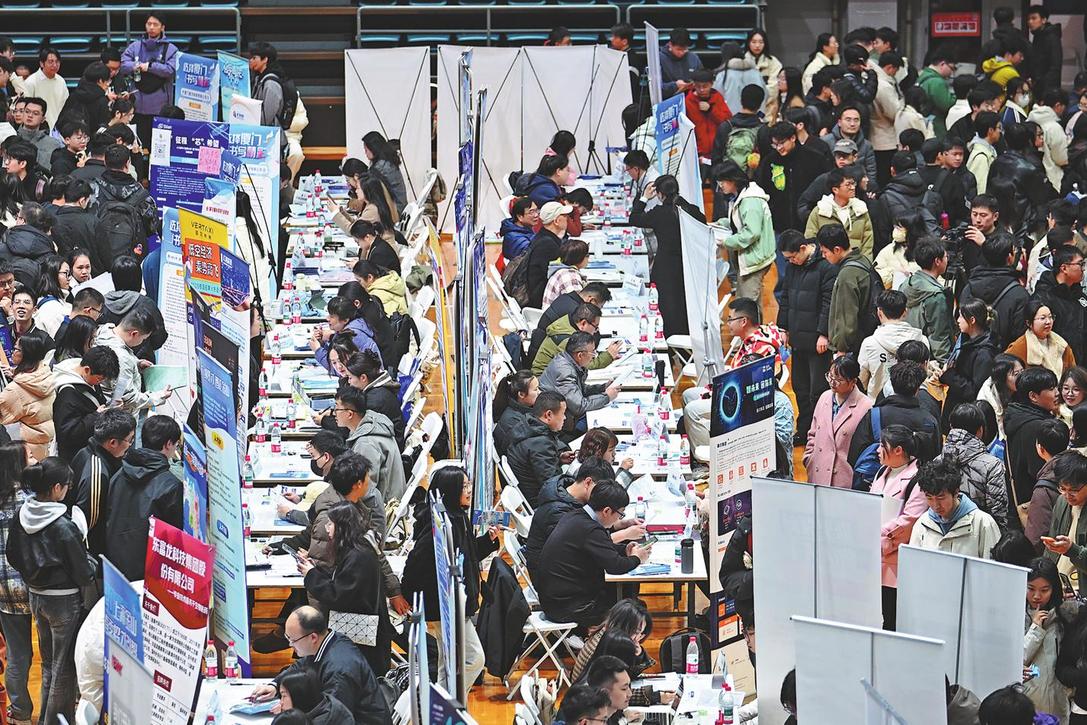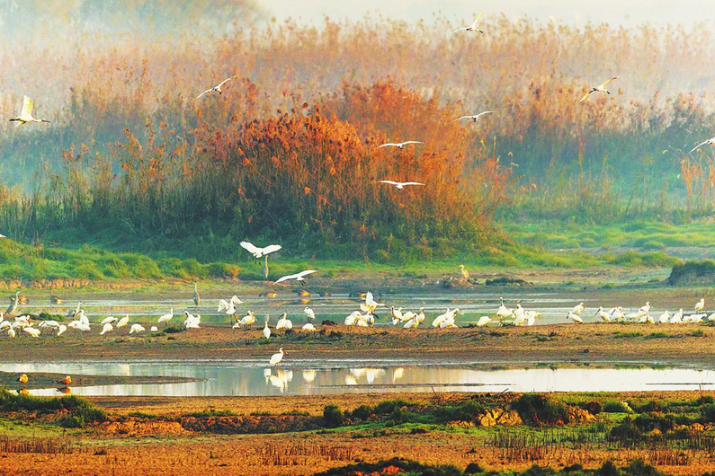Message from a metaphysical world

| The artworks of Wang Guangyi, who says every artist should be a Don Quixote. Photos provided to China Daily |
Chinese artist's work recounts his relationship with Italy and spirituality
Perusing a collection of unpublished works by the artist Wang Guangyi in a place like Ravello, the most peaceful and charming resort on the Amalfi coast of Italy, is a fascinating experience.
If, on top of that, you are given the chance to talk to the Chinese artist, you certainly have something to remember.
The originality and sophistication of Wang's work make him one of the most acclaimed figures on the contemporary international art scene, his artistic role being an innovative path of praxis and thought.
Playing host to Wang's show has been the Villa Rufolo, a historical villa with its Moorish cloister, the well surrounded by ruins and the exotic plants that inspired Richard Wagner to create Klingsor's garden for his opera Parsifal.
Titled Viaggio in Italia (A Journey to Italy), the exhibition, which runs until October 31, consists of about 50 works of art that trace Wang's relationship with Italy, starting from the artworks and installations that were created for the Venice Art Biennale last year.
A large part of his new work is shown in a sort of embryonic form destined for further study.
"Definitely," Wang says. "Only some parts may remain in an embryonic stage forever: There is no certainty that they will develop into independent works, but exist to give clues to my thought processes."
Wang's relationship with philosophy is an intense one, ranging from Plato to Kant. The art critic Demetrio Paparoni, curator of the show and author of a biography on Wang, says: "In reflecting on Kantian thought, Wang has turned his research toward the essence of phenomena in the direction of what Kant called the 'thing-in-itself'."
Wang's work has erroneously been classified under the genre political pop, Paparoni says.
"One of the main themes of Wang's art is 'transcendence' instead," Paparoni says.

"He has reaffirmed on many occasions how his art would not make sense without accounting for its spiritual side, clarifying that the individual cannot live without faith, even when it is based on mythical traditions, on superstitions or the influence exerted by ideologies or the market."
Wang tells China Daily why faith in particular is such an important aspect in his work.
"Because faith is a goal determined for individual survival, and, at the same time, all faith is blind."
But he also says: "The space between 'blindness' and 'goal' has the complexity of conflict. As an artist, this sort of complexity is of great interest to me."
In Ravello, for the first time in Wang's 30-year career, we find self-portraits, a genre that he has hardly experimented with.
"I have made very few self-portraits," he says. "I remember drawing a self-portrait over 10 years ago as if by chance. Most of my self-portraits have been drawn during chance standstills in the creative process. I understand drawing a self-portrait as a brief exercise in self-examination does not have a universal significance."
Undoubtedly, Wang produces work that is associated with transcendence, the "metaphysical", something that goes "beyond physics". But at the same time it is well rooted in the mundane world. We can probably talk in terms of a dualistic vision, and whatever dualism pervades his thought is one of spontaneity.
We could also describe Wang's work as "ecstatic temporality", as Heidegger put it.
"I really approve of that concept," Wang says. "Critics use the words transcendent and metaphysical when interpreting my art, and even I use them at times when talking about my work, but in reality I am personally uncertain if there is anything transcendental or metaphysical in my art.
"When an artist is creating, he/she often falls into the material world to understand the forms which can be perceived and experienced. As for me, when I am dealing with these materials, I can't help but encounter Plato's Theory of Ideas. The philosopher thought that only the world of ideas is real, while perception, concrete concepts and experience are nearly illusory. "According to Plato,that creative experience leads me out of falling, but keeps me in a space of illusion, in an illusionary state."
In Ravello, it becomes clear that the atheist Wang was intrigued by the enigma of the Shroud of Turin. On display there are a series of works dedicated to it. It sounds like a natural consequence of the interest he has always had toward Christian iconography, obviously linked to Western art he has been studied so deeply.
"I think my interest in the shroud lies in the fact that I see it as a myth which is associated with Christian tradition. Its authenticity has been the subject of much controversy, and this sort of controversy in itself is enormously attractive to me from an artistic point of view. Of course, it is also connected with my early experience of studying the history of Western art."
Recently, Wang also created a series inspired by the apostles. In his mind, they symbolize workers deprived of their rights, the poor and the neglected. Does he believe art can save or fix the world?
"I think that it was relevant, in the early period of my life as an artist, I believed at one point that art could indeed rescue and restore this world, but now I think that art can rescue and repair, but possibly only the artist himself or herself."
Among the previously unpublished works on show in Ravello is a series on Miguel de Cervantes' knight errant Don Quixote.
"The art critic Anton Castro says: "He depicts Don Quixote with the overwhelming strength of the gesture that documents a specific moment and elevates every situation to a state of life a psychological climate that speaks of valor, generosity, the ability to fight for ideals, hope and desire to improve the world."
Wang feels like a contemporary Don Quixote, and he also believes that any artist from any age should be a perennial Don Quixote.
"Of course, I feel that deep inside an artist there is always the spirit of Don Quixote, engaged in a struggle with hallucinatory and imaginary objects. From an everyday point of view, this sort of struggle is absurd, but behind this absurdity there is perhaps a hidden value that is of enormous importance. That is, everything that is connected to the individual is not real except the subjectivity of the individual. In reality, everyone fails to see the 'true' object clearly."
Asked how he deals with celebrity, he replies: "There is no doubt at all that an artist always has the worldly idea that he could become a star in some corner of his brain. An artist has to be careful when faced by this huge global commercial civilization, and retain the sense of mystical yearning towards art, and an attitude of total respect for the metaphysical and unknown. This is the only way for an artist to save him/herself."
Wang is now working on his next exhibition, a retrospective at the Gas Natural Fenosa Museum of Contemporary Art, in Coruna, Spain, next July.
For China Daily
(China Daily Africa Weekly 09/26/2014 page28)
Today's Top News
- UN envoy calls on Japan to retract Taiwan comments
- Innovation to give edge in frontier sectors
- Sanctions on Japan's former senior official announced
- Xi stresses importance of raising minors' moral standards
- Coordinated reform key to country's growth
- Shandong gives new life to traditions































